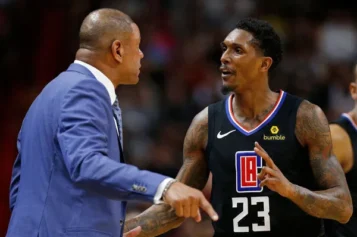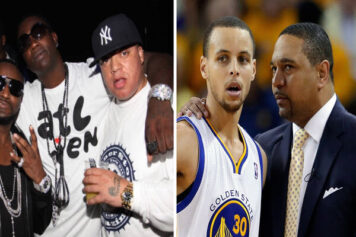ESPN has relieved NBA analyst Mark Jackson of his duties, according to reports. The Worldwide Leader is poised to promote Doris Burke and hire Doc Rivers to join the main broadcast team with play-by-play man Mike Breen. This is the latest attempt by ESPN to revamp its NBA coverage and increase ratings, but none of it will really matter.
The Writing Was On The Wall
ESPN let go of Jackson’s partner Jeff Van Gundy earlier this summer, so the writing was on the wall.
Van Gundy, despite the trios popularity, is often critical of the NBA and its officiating and that likely didn’t sit well with NBA commissioner Adam Silver and the executives at league headquarters.
While there is no way to definitively say the NBA wanted a network to do something, you would be naïve to think that a multibillion league who seeks multibillion-dollar contracts from its broadcast partners don’t have an understanding of what both sides want.
Once ESPN let Van Gundy go, moving on from Jackson was easy. So much of their chemistry stems from their relationship as coach and player. It would be unlikely that Jackson and Burke or Jackson and Rivers would have the same chemistry.
But ultimately this move is like shuffling deck chairs on the Titanic.
The NBA As A TV Product
The NBA as a television product appeals to its core segment of diehard fans and pulls in the casual sports fan depending on the matchup. That’s why brand name players are always on national television.
But the model of viewers and ratings that is used to calculate value of the NBA rights is antiquated. As the league’s hard core fans age and dwindle by the numbers, the league is doing nothing to address its next generation of fans.
Generation Z, that is people between the ages of 13-25, has an interesting relationship with sports consumption.
According to Morning Consult, 32% of Gen Zers said they watch live sports through authorized streaming services, compared with 28% who watch via broadcast or cable TV. YouTube, Instagram and TikTok are Gen Z’s most popular sources of sports news. And nearly half of Gen Zers (47%) said they have never watched a professional sporting event in person.
If you’re between the ages of 38-48 think about where you’d fit in those breakdowns.
Yes, times have changed and so too has technology. Plus consumption options far surpass anything available in the ’80s and ’90s. But that’s exactly the point.
Wasting time on a traditional three-person booth for broadcast tv seems counterproductive if you’re reading the signs of where this is all going.
I don’t know what NBA game consumption will be like in 10 or 20 years, but it won’t look like this.



